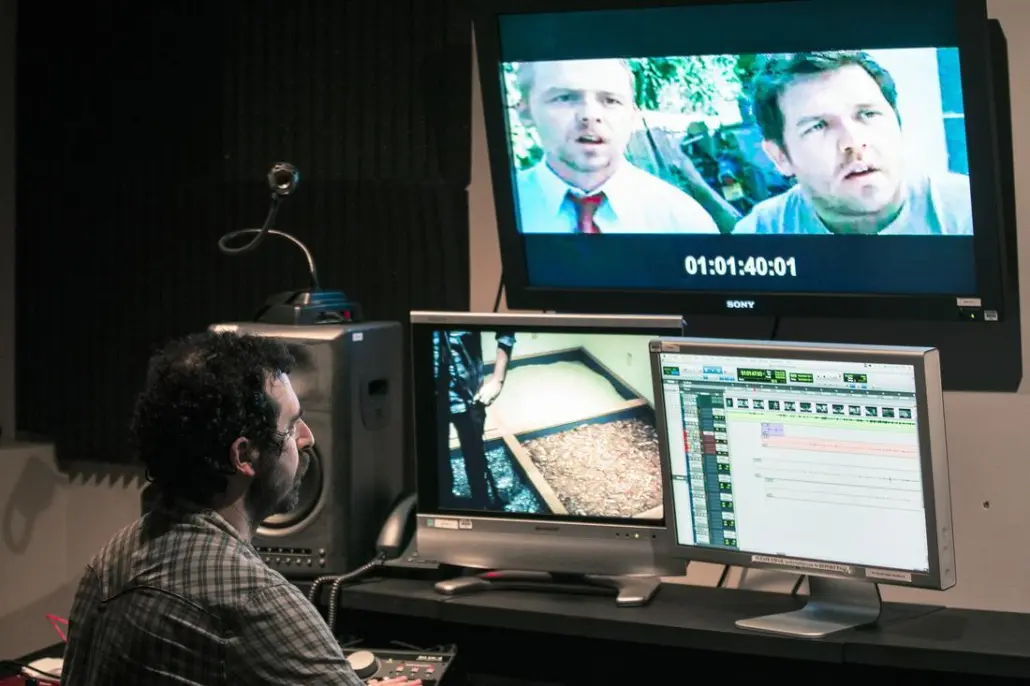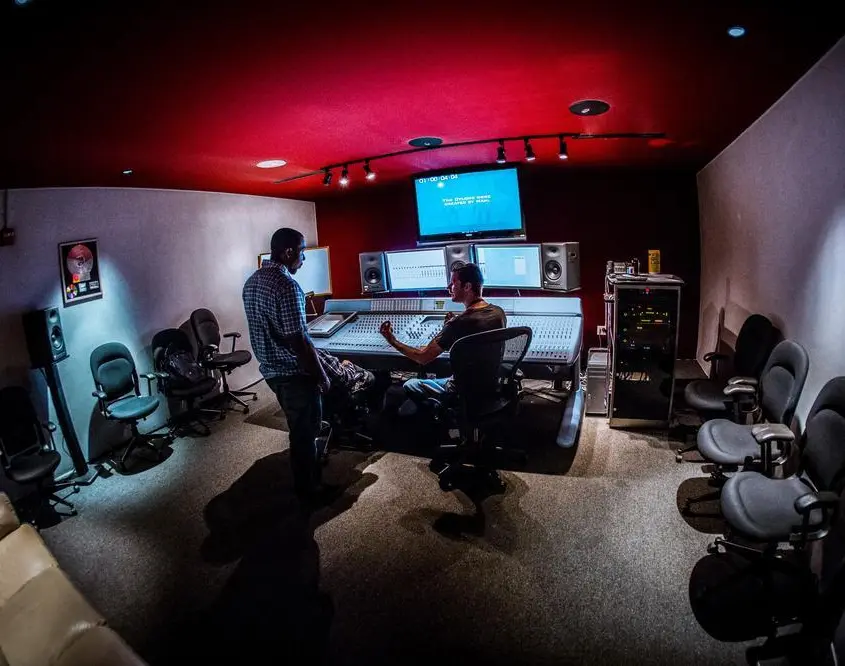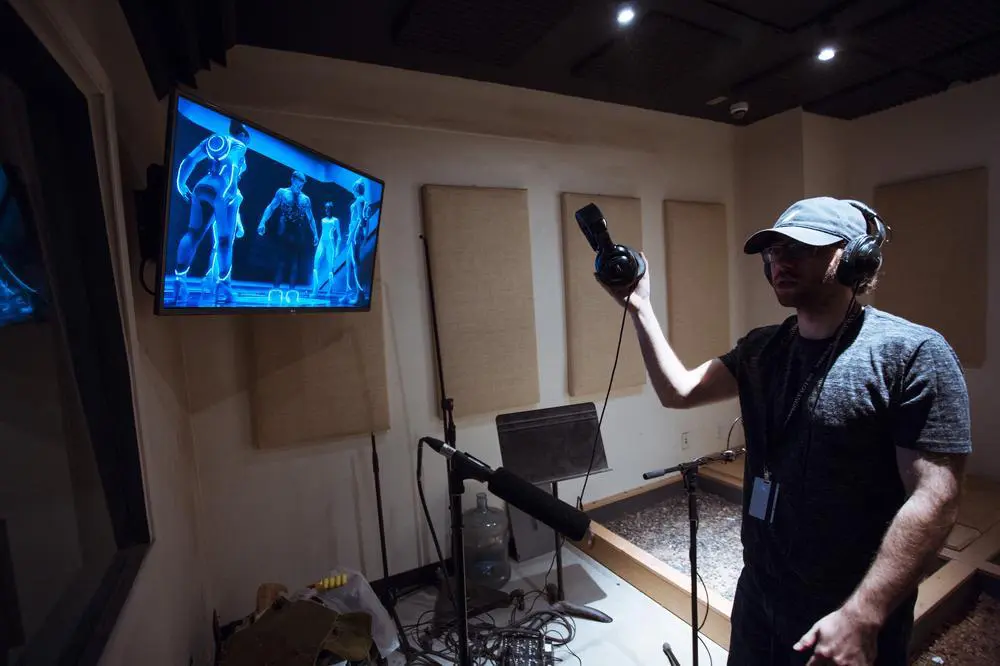Inside the World of Foley: How Movie Sounds Are Made From Scratch

You hear it before you see it.
The crunch of gravel underfoot, the eerie creak of the slowly opening door, the whoosh of a superhero’s landing.
Sound brings film to life.
But behind each and every sound is a Foley artist—craftspeople who use performance, props and precision to turn visuals into fully immersive scenes that crackle the senses.
In our Audio Production Program, students explore this art of sound through hands-on practice, with the same tools and techniques used across the industry.
So let’s get a closer look at what Foley is all about.
What is Foley?
Foley is the art of recording custom sound effects to match a film’s visuals.
The first image that might pop into your mind is clacking coconut halves together to sound like a horse trotting—and you wouldn’t be wrong!
Named after Jack Donovan Foley, an early innovator in the field, this unique craft involves performing everyday sounds in sync with a film’s footage. It can be anything from footsteps (or horsesteps), cloth movement, clinking glassware—you name it.
Foley bridges the gap between realism and imagination, helping audiences truly believe in the world they see on screen.
It’s hands-on, performance-driven and often surprisingly analog in an otherwise heavily digital industry.
How does Foley Work?
Foley typically takes place on a purpose-built stage, where artists record in acoustically treated studios that allow for absolute sound control.



These spaces are typically stocked with a strange and varied mix of tools, such as gravel pits, chains, fabrics, metal bars, and countless other props—each chosen for the textures it brings to a film’s world.
The artist performs the sound in real time, watching the footage as they match their timing and intensity to the action on screen.
You can think of it as part choreography, part improvisation—and it requires a trained ear just as much as a steady hand.
Get it wrong, and the moment falls flat. Get it right, and the audience doesn’t even realize the magic is taking place.
The Craft in Action
Great Foley moments stay with us, but not necessarily because we notice them.
In fact, it can be argued that a great Foley artist will never be noticed because they make us believe what we see on screen is what we hear.
Here are a few iconic examples of Foley (that you might not have known):
- E.T. (1982): A mix of Jell-O and a damp T-shirt was used to create the squishy, endearing movement of the iconic extraterrestrial character.
- Titanic (1997): The sound of Rose’s crackling hair as she lifts her head off the frozen wood of the door she’s floating on is, in fact, the sound of frozen lettuce being peeled by Foley artists.
- Fight Club (1999): Known for its brutal fight scenes, what you’re actually hearing in Fight Club is a mixture of clever (if not quite visceral) audio tricks, including shattering chicken carcasses with baseball bats, cracking walnuts and heavy bags being thrown to the floor.
- Inside Out (2015): Tasked with finding the ambiance of Riley’s mind, the sound director put microphones on a sandy beach and recorded the sound of small crabs scuttling along. It was described as “a very strange, interesting sound that had movement and character, but it didn’t stick out.”
- The Exorcist (1977): I’m sure most of you will know the famous scene in the supernatural horror The Exorcist where the possessed 12-year-old girl’s head twists a full 360 degrees. The sound of this unnatural act was an old leather wallet being held up to the microphone and twisted with a few credit cards inside. What’s more, the wallet was borrowed from one of the sound crew.
Tools of the Trade
Foley stages often resemble junkyards—but in the best way possible.
Artists rely on a vast array of items to come up with the perfect sounds. Celery for broken bones, chains for suspenseful rattles, a wet cloth for blood or mud.
Your imagination is the limit.
Every prop or object is a potential sound in disguise. And learning to identify, test and refine these materials is part of the daily creative problem-solving that defines the craft.
No two projects are the same, and there are always new and exciting limits to reach and break, which is exactly what draws so many creatives to the field.
From Stage to Screen: The Post-Production Pipeline
Foley is just one layer of a film’s audio landscape.
It works in harmony with the dialogue, music, ambient tracks and additional sound effects that make up a cohesive world.
Foley artists typically come into play after the picture edit is locked. Working alongside re-recording mixers and sound designers, they elevate the raw picture with synchronized audio detail.
At The L.A. Recording School, a division of the Los Angeles Film School, students are exposed to the full pipeline. They learn how their Foley recording integrates into larger post-production workflows and how to collaborate effectively with other roles for maximum consistency and impact.
Training in Foley
Students in the Audio Production program receive practical training in Foley recording, learning the creative and technical skills needed to craft lifelike soundscapes.
The course covers things such as syncing sounds to picture, experimenting with props, and capturing nuance in performance.
Dedicated Foley/ADR rooms with industry-standard microphones and gear let students practice in real-world environments that mirror professional post-production studios, so you can get a real-life look at what it’s like to work as a Foley artist.
Check out more about that classes you take in our Audio Production Degrees here.
Meet the Alumni Mastering Movie Soundscapes
Foley may work behind the scenes, but our alumni are front and center in some of today’s most recognized productions.
- Mikaela Padilla (Audio Production, 2022) has been credited as a Foley Mixer on Mufasa: The Lion King, Sonic the Hedgehog 3 and was credited on the Oscar-winning film Wicked.
- Alexander Jongbloed (Music Production, 2017) worked as a Foley Mixer on Shrinking, Cobra Kai, Suits L.A. and more.
- Vincent Deng (Recording Arts, 2016) contributed Foley to shows like Atlanta, Outlander, Bel Air and the Kung Fu Panda TV series.
These alumni exemplify the creative, technical, and collaborative strengths that students develop here at The L.A. Recording School, and we couldn’t be more proud of what they’ve achieved.
Want to create your future in sound?
Learn more about our Audio Production program and the world of sound design here.
